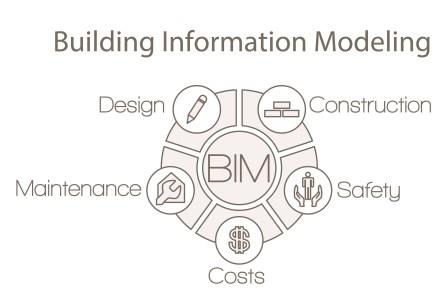

Printable PDF version
Subscribe to our newsletter
BIM Changing the Construction Industry
Jobs and the Future
Interesting Year Ahead
Construction
Management Specialists
111 Pine Street, Suite 1315
San Francisco, CA 94111
(415) 981-9430 (San Francisco office)
6518 Lonetree Blvd., Suite 164
Rocklin, CA 95765
(916) 742-1770 (Sacramento office)
9449 Balboa Avenue, Suite 270
San Diego, CA 92123
(619) 518-5648 (San Diego office)
8538 173rd Avenue NE
Redmond, WA 98052
(206) 571-0128 (Seattle office)
2063 Grant Road
Los Altos, CA 94024
(650) 386-1728 (South Bay office)
7083 Hollywood Blvd., 4th Floor
Los Angeles, CA 90028
(424) 343-2652 (Los Angeles, CA office)
www.TBDconsultants.com
BIM Changing the Construction Industry
BIM was supposed to be the ultimate tool for construction. One model would be used from conceptual design, through the bidding process, then passed to the contractor, and finally it would be handed over to the owner for use in managing the facility. But to date, the reality has largely been different, partly because different BIM applications have often been seen as more appropriate for specific disciplines (e.g. mechanical engineering), and also because of the traditional division between design and construction.

Interoperability between systems is helping to bridge some of these divisions, and not just between actual BIM systems. Methods of facilitating the automatic transfer of data between BIM systems and energy modeling systems are becoming more common, and the use of data mining existing BIMs to benchmark characteristics from previous projects can provide the basis for inputs to the energy model at the earliest stages. The linking of these models allows impacts of changes in orientation, massing, different materials, etc., to be understood almost instantly, so that informed decisions can be made before the design progresses too far.
Traditionally, the design team has been tasked with the job of producing a design, and bringing that design to a stage where it can be bid. The contractor then comes up with the means and methods for actually constructing the project, and they produce the shop drawings, which then have to be approved by the design team. The level of detail the contractor has to work with is going to be more involved than that to which the design team usually is required to go, and must take into account the sequence of construction required to complete the project. But that process means that the contractors and subcontractors have been bidding on a design that is incomplete, and the RFI (Request for Information) process is used to resolve the issues, which in turn can lead to change orders and added cost to the building owner.

A BIM model can directly produce detail at shop-drawing level, defining how the building will be constructed, including the sequence of operations and what temporary shoring or other methods will be required in the process. Being able to show the construction sequence can identify constructability issues and problems with conflicting work by different trades.
The BIM model can also be used to show the building owner and users what they will be getting, especially when linked to some form of virtual reality (VR). Allowing future users to move through a simulation of the building while it is in design can ensure that it meets everyone’s needs adequately. Providing walk- or run-throughs of the building using BIM with VR has also proved useful for establishing emergency evacuation procedures and the like.
The level of detail possible with BIM results in shared risk between the Design Team and the Contractor, and necessitates bringing in the contractor at an early stage in the design to provide the constructability expertise. That type of cooperation has been the goal of IPD (Integrated Project Delivery), where owner, design team, and contractor work together from the early stages of a project and share the risk. The online sharing of the BIM model becomes a major tool for that collaboration, allowing the model to be viewed on PCs, tablets, or whatever device people come up with. This collaboration should also lead to true Value Engineering, which is not just desperate cost cutting.
Such innovative methods of project delivery will require different contractual arrangements that address the sharing of project risk. But the incorporation of construction means and methods into the design process and the additional expertise that is available should result in a smoother construction project that is delivered quicker and more economically.
During construction, the incorporation of data from laser scanning into the model can help in coordinating MEP and other installations, minimizing rework, change orders, and delays. The use of BIM can also make it easier to prefabricate sections of the building, including MEP systems, resulting in speedier erection on site, and cost savings. The use of the BIM model to control computer-aided manufacturing can be implemented in both a factory situation, and on site, e.g. with the BIM model working with GPS data to control an excavator. The BIM can also feed information into the procurement/bidding processes.
Once the building is handed over, the facilities management group can utilize the BIM, recording maintenance information and producing maintenance reports and checklists. Using barcodes on equipment can speed data entry, and provide a method for maintenance personnel to call up the specification and requirements for specific equipment.
The improved coordination that is facilitated by the central BIM model should result in a more efficient and ecologically-friendly building that can be constructed faster and more cost effectively. It should also improve construction safety on site, and help the multiple contractors and subcontractors to work together efficiently. When the building is in use, the BIM model should then assist the facilities management team in keeping the building functioning smoothly.
In this article we look at how technology is changing the job market, and ask where is all that leisure time that computers were supposed to bring us.
A new year, and a new President. In this article we speculate a bit on what both might mean for our industry and the world in general.
Design consultant: Katie Levine of Vallance, Inc.